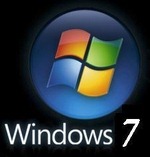 Microsoft long ago announced that it was ending support for Windows XP. However, the company continues to march on with additional end of support dates and times to really drive the point home for users who continue to be surprised that the company is no longer supporting Windows XP.
Microsoft long ago announced that it was ending support for Windows XP. However, the company continues to march on with additional end of support dates and times to really drive the point home for users who continue to be surprised that the company is no longer supporting Windows XP.
Recently, there was some hubbub about Microsoft not intending to deliver the next Internet Explorer version upgrade on the Windows XP platform. It shouldn’t really be a shock since official support for Windows XP has ended, it is not much of leap to figure that the company won’t really be developing much in the way of new software, services, or features for XP, unless there is some sort of strategic advantage in doing so.
The current support end date is April 13, 2010 which marks the end of support for Windows XP Service Pack 2, or SP2 as it is better known. Also, support for Windows Vista RTM ends that day as well, although no one really seems to care about that.
The interesting piece of this situation is that there is no Service Pack 3 for the 64-bit version of XP which means that there is no update to install in order to "catch-up" to the current support window. However, Microsoft has put the 64-bit version on the SP3 end of support timeline, which means essentially, that all XP editions currently running the latest Microsoft Service Pack are set until April 8, 2014 which marks the end of line for those operating systems to receive updates or patches.
Capital One Rewards Catalog update at Finance Gourmet
There is some confusion among those not in the IT industry over exactly what is going on here, since Microsoft already said that there was no more support for Windows XP. Allow me to fill in the gaps.
When Microsoft ended XP support it was a mostly symbolic gesture made to push people and businesses to upgrade to Vista, and more seriously, to Windows 7. While regular home users of Windows XP have been "unsupported" for some time now, businesses with various levels of support agreements or volume licensing agreements have continued to receive support under those programs. This is not surprising, since business made it very clear that they were not going to upgrade to Vista. If Microsoft wanted to keep getting the dollars that those service agreements generate, they were going to have to offer the support businesses wanted to pay for which was XP support.
In other words, public, free, Windows XP support is long gone. But, businesses that pay big dollars for their Microsoft support, or that have it as part of their purchase contracts, still get it. Microsoft has continued to release patches and updates for security issues and other technical problems in Windows XP in order to support these business customers. Once developed, there is no reason not to make them available to everyone, so patches and updates have continued to arrive for home users on Windows XP SP2 as well.
Denver 16th Street Mall Shuttle at Fun-Denver-Attractions.com
If you are wondering how anyone could still be running XP SP2, the answer lies in the massive, hard to support, even harder to secure, installations within American business. These companies did not adopt SP3 because it contained some new features or "fixes" that either broke something they needed to keep working, or that those companies were worrying would open up security issues or other problems. Keep in mind that some of these companies use computer hardware for several years and each upgrade requires more power than some of their oldest PCs have.
By now, most companies have moved to SP3 and just disabled whatever they did not need out of it, so Microsoft can shutdown SP2 support altogether. That does not mean that those companies are ready to make the move to Windows 7 anytime soon, which is why the SP3 support date is another couple of years into the future. By 2014, Microsoft is hoping that anyone left on Windows SP3 will be the stragglers as opposed to the established majority, like they are today.
What it all means to you is that you need to install SP3, or the next vulnerability that gets discovered in XP won’t get patched on your system which means it is only a matter of time until your PC is overrun with Trojans and viruses.
More importantly, it moves the hand of the Windows XP Doomsday clock closer to midnight.